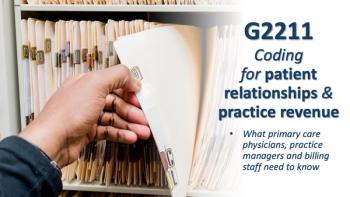
More Effectively Schedule Patient Visits at Your Practice
Effective patient visit scheduling is obviously not as easy as it seems. Here's how to ensure your practice makes smart scheduling decisions.
Medical offices are notorious for running behind schedule. The usual suspects - late patients, additional complaints not mentioned when the appointment was made, and late physicians - contribute to the problem, but they are not nearly the whole story.
The basic building block of most schedules is the average length of a patient encounter. A real calculation must take into account the difference in time required for different types of visits, but the concept is clear.
Hours in Clinic / Average Encounter Length = Appointment Capacity
Suppose an office has determined that each patient encounter averages fifteen minutes; morning clinic is from 8 a.m. to 11:30 a.m.; and afternoon clinic is from 1 p.m. to 4:30 p.m. The obvious conclusion is that 14 patients can be seen in the morning; 14 in the afternoon; and there is some slack at midday and at the end of the day to manage overruns. Why does it almost never work out as planned?
The tyranny of averages is the primary culprit.
An average is a calculation, not an observation. If a real patient encounter happens to take the same amount of time as the average encounter, it is only a coincidence. Most visits will take more or less time. The amount of variability around the average has a profound impact on how well the average works as an estimate of reality. Consider:
Effective scheduling requires accounting for the standard deviation around the average. In Scenario 1, the physician is probably idle, waiting for his third patient to arrive. In Scenario 2, the physician's third patient is kept waiting 35 minutes. The size of the delays and gaps increase as the office gets further into the clinic session.
Reducing variability is key to maintaining provider productivity.
The standard appointment slot should always be longer than the average appointment length to be reasonably sure it will be long enough. The greater the variability in encounter length, the longer the appointment slot should be, and the more likely it is that the provider will be idle waiting for patients to arrive. If the variability is not taken into account, patients face long waits and the office incurs overtime costs.
Not all of the variability is within the control of the practice, but a big one is. The practice can assign relative appointment lengths that accurately reflect the complexity of different types of visits. If a pre-op visit typically takes three times as long as a post-op, the pre-op visit should get an appointment equal to three schedule "units," and the post-op would get one.
Take transitions and interruptions into account.
If a physician has 3.5 hours in a clinic session and she spends 15 minutes with each patient, there is no way she can see 14 patients in the session. She has to walk from room to room, review a chart before going into the exam room, and may need to issue instructions to staff after she has left the exam room. There may be interrupting phone calls, and staff will certainly have at least a few urgent questions within the 3.5 hours.
In developing averages and standard deviations, the easiest way to account for this time is to include it in the appropriate patient encounter. Start the clock when the provider picks up the patient's chart from the exam room door, and stop it when she picks up the next patient's chart.
Effective scheduling increases patient, provider, and staff satisfaction, and it boosts overall productivity. Next week, we'll look at some of the negative effects of aggressive scheduling.
Newsletter
Optimize your practice with the Physicians Practice newsletter, offering management pearls, leadership tips, and business strategies tailored for practice administrators and physicians of any specialty.




